#indian vegan recipe
Explore tagged Tumblr posts
Text
Bhopali Poha (Breakfast Style)
Made with flattened (and dried) rice, poha is a famous street food in India. There are different variations of poha in different regions. This one is from Bhopal.
Made with flattened (and dried) rice, poha is a famous street food in India. There are different variations of poha in different regions. This one is from Bhopal. As a child, I went to visit my khala (aunt) who lived in Bhopal. Among other memories I have from that trip, a vivid one is having poha. My uncle would go to the local street vendor every morning and brought it for breakfast for all of…

View On WordPress
#breakfast ideas#Breakfast poha#breakfast recipe ideas#breakfast recipes#easy breakfast ideas#indian street food#indian vegan recipe#indisch vegan rezept#Poha#Poha recipe#vegan breakfast ideas#vegan recipe ideas#vegan recipes#Vegan rezepte
3 notes
·
View notes
Text
No Fry Sabudana Vada
“Spinach and Tapioca Balls” Sabudana vada is a popular Indian snack that is loved by people of all ages. Made from soaked sabudana (tapioca pearls) and other ingredients, these deep-fried fritters have a crispy exterior and a soft, flavorful interior. This delightful snack can be enjoyed on its own or as part of a meal. With its crispy exterior and soft interior, it offers a burst of flavors and…
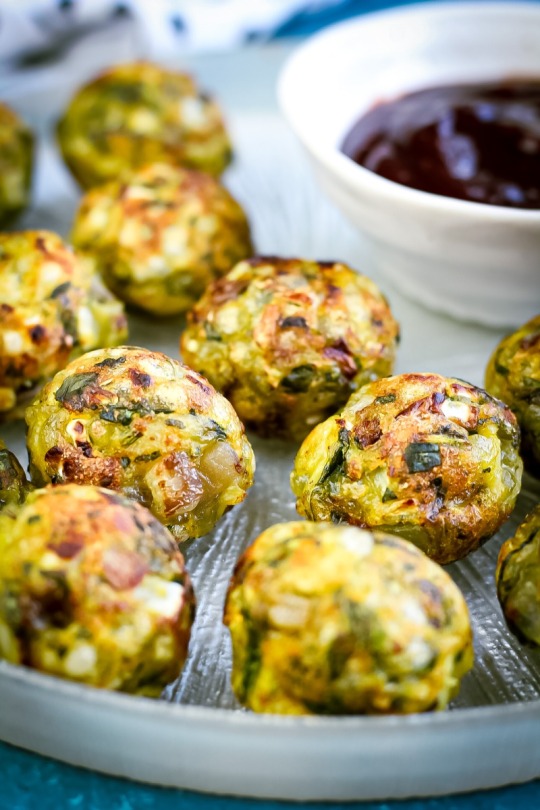
View On WordPress
#apple pan#healthy indian snack#healthy vada recipe#indian vegan recipe#no fry vada#sabudana spinach vada#sabudana vada#vada#vegan snack recipe
0 notes
Text

Iced Chai Latte Recipe
#iced chai latte#iced latte#chai latte#tea#chai#drink#spice#no bake#indian#fusion#asian#recipe#tea latte#cinnamon#ginger#cloves#cardamom#vegan friendly#dairy free#homemade#breakfast#tea time#dessert#foodess
176 notes
·
View notes
Text

Garden Vegetable Curry
161 notes
·
View notes
Text

Cucumber and Strawberry Kachumar Salad with Lemon Balm
#food#recipe#lunch#dinner#kachumar#salad#cucumber#strawberry#lemon balm#sumac#lime#onions#mint#vegetarian#vegan#gluten free#dairy free#indian#pakistani
56 notes
·
View notes
Text

Indian Red Lentil Dahl
#savoury#indian#india#curry#curries#lunch#dinner#rice#lentils#red lentils#food#recipe#recipes#vegan#veganism#healthy food#healthy eating#clean eating#health#wellness#nutrition#muscle#gym#gymmotivation#gymlife#low cal#fatloss#low cal recipes#low calorie
65 notes
·
View notes
Text

Just made some bomb-ass vegan shahi paneer (tofu) and homemade garlic naan
This is hands-down my new favorite dish 😭🙏
I'll link the recipe in the replies!
26 notes
·
View notes
Text
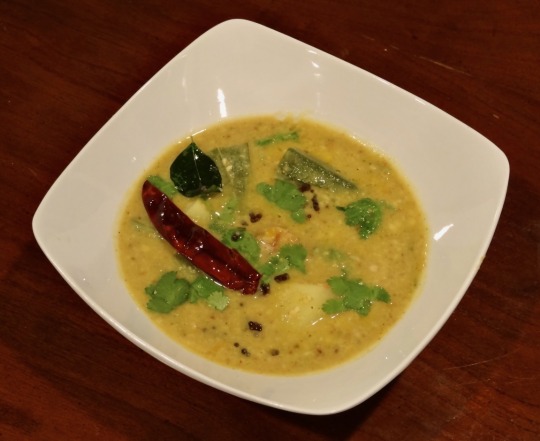
[ID: A bowl of a bright yellow stew topped with cilantro, mustard seed, chili, and curry leaf. End ID]
ಉಡುಪಿ ಸಾಂಬಾರ್ / Udupi sambar
A sambar is a lentil-and-vegetable stew distinguished by the use of a particular spice blend (Hindi: सांबर मसाला "sāmbār masālā," "sambar spice"; Kannada: ಸಾಂಬಾರ್ ಪುಡಿ "sāmbār puḍi," "sambar powder"). Sambars are a staple of South Indian and Sri Lankan cooking, sometimes made in households for multiple meals a week. The word "sambar" can be traced back to the Sanskrit सम्भार "sambhārá," "collection of things required for a particular purpose”; “spices."
The lentil used in sambar dishes is usually tur dal (split pigeon peas), though arhar dal, tuvur dal, or even blends containing masur or mung dal may be used, depending on the cook or the region. Vegetables also vary between combinations of okra, potato, ash gourd (petha), bottle gourd (doodhi / lauki), drumstick (saijan ki phalli), beetroot, tomato, carrot, pumpkin, brinjal, and pearl onions, among others. The sambar masala fries chilis, curry leaves, dal, and various spices including cumin, coriander, and fenugreek, then grinds them into a spicy, earthy, fragrant blend.
This recipe makes a sambar in the style of ಉಡುಪಿ (Udupi) cuisine—a subdivision of the cuisine of the ತುಳುವ (Tuluva) people localised in the Udupi District of Karnataka, a southeastern coastal state of India. (Tuluva cuisine is also commonly found in Dakshina Kannada, Karnataka, and Kasaragod, Kerala). In the Udupi region, sambar may be known as "ಕೊಡೆಲ್" "kodhel"; perhaps related to "ಕಡಲೆ" "kadhale" "Bengal gram"; or "ಹುಲಿ" "huḷi"; "tartness." Udupi huli has coconut oil and jaggery as its primary distinguishing features: the jaggery's deep sweetness and the earthy pungency of unrefined coconut oil combine with the spice of the chilis and the sour fruitiness of the tamarind to create a complex, flavorful, well-balanced dish.
Udupi huli may be further divided into a few major types. ಮಸಾಲೆ ಹುಳಿ ("masāla huḷi") contains shredded coconut and vegetables; ಬೋಳು ಹುಳಿ ("bolu huḷi") contains vegetables, but omits the coconut.
Hotel-style masala huli recipes typically add a lot of jaggery to produce a distinct sweetness; cut back on the amount of coconut included; and contain onion and garlic. The other main type of masala huli—“temple style”—is sattvic (from Sanskrit "सत्त्व" "sattva": "goodness," "essence," "existence"), which in this context means that onions and garlic are excluded.
A sattvic diet in Hinduism centres around the concept of maintaining sattva by eating only pure and mild (sattvic) foods, and omitting tamasic (“dark,” "inert," "destructive"; from Sanskrit तमस् "tamas") and rajasic ("exciting," "passionate," from Sanskrit रजस् "rajas") ones. The concepts of sattva, tamas, and rajas (the गुण "guṇa" system) are central to the construction of caste: the degree to which each person innately inherits each quality supposedly determines their possession of characteristics including honesty, intelligence, and goodness (sattva), stupidity and lack of creativity (tamas), and passion and pridefulness (rajas); the possession of these characteristics in turn determines their rightful place in a professional and social hierarchy. The association of certain foods with certain qualities thus links diet to caste: a distinction in diet is one of the methods by which those belonging to upper castes maintain and police caste boundaries.
This recipe makes enough pudi for one pot of sambar. Traditionally, sambar pudi is created fresh each time the dish is made, but many households make large batches and store them. In this case, omit the coconut; or, use dried coconut and store the masala in the refrigerator.
Recipe under the cut!
Patreon | Paypal | Venmo
Ingredients:
Serves 4-6.
For the sambar:
2 cups chopped vegetables
1 red onion, sliced*
1 cup (200g) yellow split pigeon peas / tur dal / ತೂರ್ ದಾಲ್ (ಹಳದಿ ಸ್ಪ್ಲಿಟ್ ಪಾರಿವಾಳದ ಬಟಾಣಿ)
4 cups (1 litre) water, or as needed
1/4 tsp ground turmeric / haldi / ಅರಿಶಿನ
2 tsp table salt
2 tsp jaggery / gur / ಬೆಲ್ಲ*
1/4 cup (60mL) tamarind pulp (from 1 Tbsp dried tamarind / imlie / ಹುಣಸೆಹಣ್ಣು)
2 tsp unrefined coconut oil / nariyal ka tel / ತೆಂಗಿನ ಎಣ್ಣೆ
Ingredient list format is English / Hindi (Latin transcription) / Kannada. The Hindi is provided for convenience while shopping.
Udupi sambar usually uses any of: gourd, brinjal (Indian eggplant), pumpkin, dumstick (saijan ki phalli), and okra. Pearl onion is not usually used in this region, but you can add whatever you want, according to taste.
*For a hotel-style sambar, include the onion; increase the jaggery to 2 Tbsp.
For the spice paste / sambar masala / ಸಾಂಬಾರ್ ಪುಡಿ ("sambar pudi"):
1/2 Tbsp split Bengal gram / chana dal / ಹಳದಿ ಸ್ಪ್ಲಿಟ್ ಗ್ರಾಂ
2 tsp split black gram / urad dal chilka / ಸ್ಪ್ಲಿಟ್ ಬ್ಲ್ಯಾಕ್ ಗ್ರಾಂ
2 tsp coriander seeds / dhaniya / ಕೊತ್ತಂಬರಿ ಬೀಜದ
1/2 tsp fenugreek seeds / methi / ಮೆಂತ್ಯ
1 tsp cumin seeds / jeera / ಜೀರಿಗೆ
1 tsp ground turmeric
5-6 curry leaves / kari pati / ಕರಿಬೇವು
3-4 Byadagi or other dried red chilis / byadagi mirch / ಬ್ಯಾಡಗಿ ಮೆಣಸಿನಕಾಯಿ
4 cloves garlic, skins on*
Large pinch asafoetida / hing / ಇಂಗು
1 cup (100g) fresh coconut (about one coconut)*
1/2 cup (120mL) water
While the ratio of ingredients in Udupi sambar pudi vary slightly, the ingredients themselves are almost always consistent.
*For a hotel-style sambar, include the garlic, and decrease the coconut in the sambar masala to 1/4 or 1/2 cup (25-50g).
The grams and pulses in this pudi have many different names. You can find them in a halal or South Asian grocery store; look on the bag for the Hindi names (since they have been transcribed into Latin, the spelling may vary from what you see here).
The urad dal you find may be husked, and thus yellow instead of black; these will work just as well.
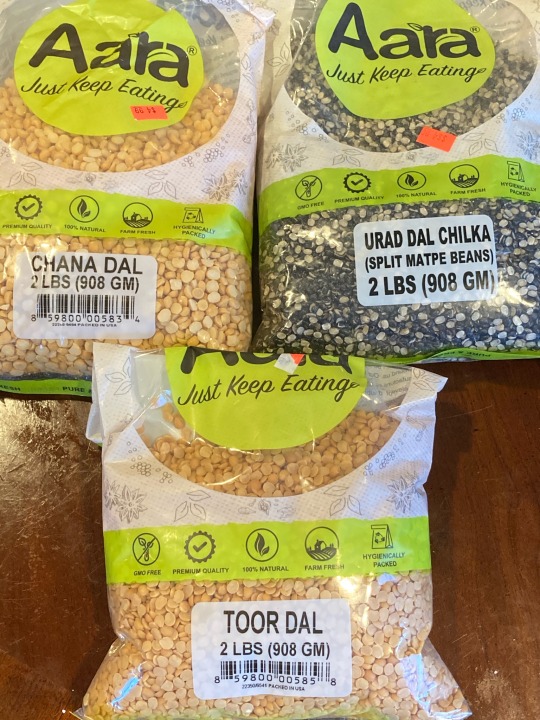
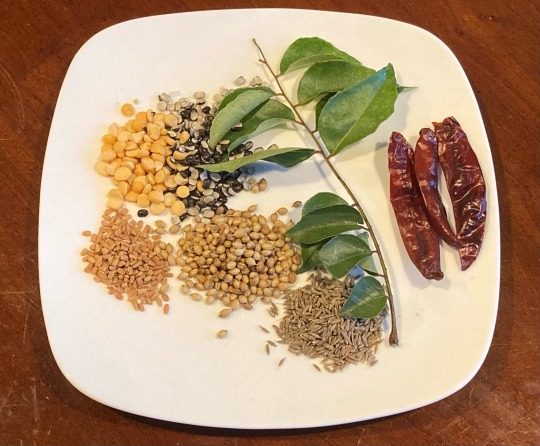
For the tempering / tadka / ಹದಗೊಳಿಸುವ:
2 Tbsp unrefined coconut oil
2 red chilis
8 curry leaves
1 tsp brown mustard seeds / rai / ಸಾಸಿವೆ ಬೀಜಗಳು
Recipes from north Karnataka may add cumin and whole, unpeeled garlic cloves to the tempering.
Instructions:
For the sambar pudi:
1. Break open the coconut and remove and shread its flesh.
If using a whole dried coconut, break into the shell with the wrong side of a hammer and pry open. Break into a few smaller pieces and peel with a vegetable peeler until the skin is removed from the white flesh, wearing something to protect your hand. Soak in warm water for several minutes to soften, and then grate or food process.
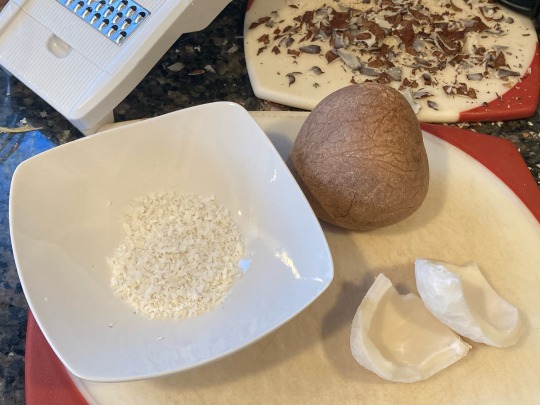
2. Heat 2 Tbsp of coconut oil in a skillet on medium-low. Add asafoetida and fry for 30 seconds, until no longer raw-smelling. Add dal and fry, stirring often, for 30 seconds until golden brown; add coriander, mustard, fenugreek, and cumin seeds and fry until fragrant.
3. Add curry leaves and fry until wilted, then add garlic and dried chilis and fry another 30 seconds to a minute, until fragrant.
4. Add coconut and fry, stirring often, for another few minutes until a shade darker. Add turmeric and stir.
5. Grind all ingredients into a paste in a mortar and pestle, then mix in about 1/2 cup water to loosen (if using dried coconut, you may need more water).
Or, put all ingredients along with 1/2 cup water into a blender or food processor and process until a relatively smooth paste forms.
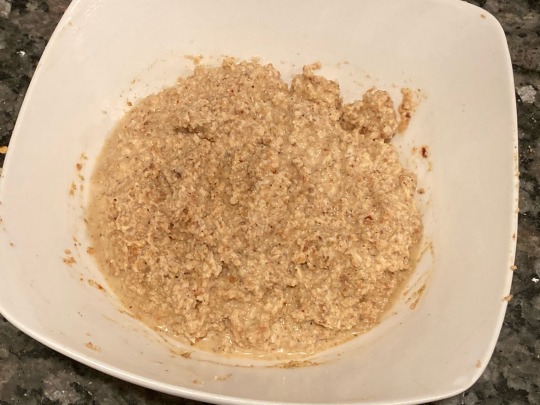
For the sambar:
1. Wash tur dal to remove excess starch. Simmer dal with 2 cups water, 1/4 tsp ground turmeric, and 1 tsp coconut oil for about 30 minutes until very tender. Mash until relatively smooth with a wooden spoon or bean masher, or process briefly with an immersion blender.
You may soak the dal in water after rinsing them to reduce the cooking time, but it is not necessary.
2. Meanwhile, make the tamarind paste. Soak 1 Tbsp tamarind dried pulp in 1/4 cup hot water for 20-30 minutes. Squeeze the tamarind into the water to extract the pulp. Discard the tamarind seeds and husk. Optionally, depending on your preferred texture, push the mixture through a metal sieve.
3. Prepare vegetables. Slice the onion; remove ends of okra and drumsticks and cut into 2-inch pieces; quarter tomatoes; quarter brinjal; peel pumpkin and cut into cubes; peel and cube potatoes.
4. If using onion, add a teaspoon of coconut oil to a large pot and fry until translucent.
5. In the same pot, boil vegetables in just enough water to cover, along with a pinch of salt, until they are beginning to soften.
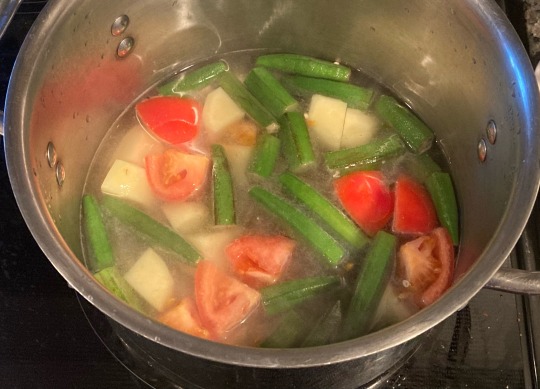
Some recipes call for the vegetables to be boiled, and others call for them to be steamed. I prefer boiling, since it produces a nice savory broth.
6. Mix vegetables, dal, tamarind, jaggery, sambar pudi, and salt to taste and simmer 5-10 minutes to allow flavors to combine and vegetables to cook under tender. Add water as needed. Remove from heat and stir in cilantro. Taste and adjust salt.
The final sambar should be pourable, like a thick soup—Karnataka sambar is typically thinner in consistency than Tamil Nadu versions.
For the tadka:
1. Heat coconut oil in a small skillet on medium heat. Add tempering ingredients and fry, stirring often, until chilis and curry leaves are a couple shades darker and the mixture is fragrant.
2. Pour the oil and tempering ingredients into the sambar and stir in. If you like, retain some of the tadka as a garnish to serve.
3. Serve warm, in individual bowls, alongside long-grain white rice. To eat drumsticks, scoop the center out and eat it; the tough outer rind is left.
If you intend to save some sambar, it's a good idea to make just enough tadka for what you plan to eat that day, and then make fresh tadka to pour over the reheated leftovers.
112 notes
·
View notes
Text
Pumpkin Coconut Curry
This is a vegan coconut curry I made as a dupe from a great restaurant I used to frequent in Melbourne, Australia (my city). Melbourne has a thriving Jewish community in the inner south-east, and I'm excited to share some dishes I've picked up in my time living here, as well as dishes I make for my own family.
Type: meal, parve, kosher-for-pesach (kitniyot), vegan
Estimated cooking time: 45 mins
Ingredients:
½ pumpkin, cut into slices (approx 800g/1.7lb)
1 medium brown onion, finely chopped
2 tbsp minced fresh ginger
2 tbsp minced fresh garlic
1 large red capsicum/bell pepper, sliced thinly lengthwise
3 tbsp yellow or red curry paste
2 400ml/13oz cans of coconut milk
2 tbsp sugar
1 tsp ground turmeric
1 pinch sea salt flakes
1 tbsp soy sauce
2 tbsp lemon juice
Olive oil or vegetable oil
Handful of peanuts or cashews, chopped (optional)
Fresh coriander/cilantro, chopped (optional)
Utensils + Tools:
knife
cutting board
measuring spoons
large pot or saucepan
oven
tongs
Instructions:
Preheat oven to 200C/400F. Lay pumpkin slices out on a baking tray, drizzle with oil and sprinkle with salt flakes. Roast for 30 minutes.
Heat some oil in a large pot over medium heat. Add onion, ginger and garlic. Saute for 2 - 3 minutes.
Add capsicum/bell pepper and curry paste and stir. Cook for 2 mins.
Add coconut milk, sugar, turmeric, salt and soy sauce and stir. Bring to a simmer over medium heat.
Once simmering, reduce heat to low and cover. Cook for 10 - 15 minutes, stirring occasionally.
Add lemon juice and cover. Simmer for 3 - 4 minutes.
Take off heat and serve over rice, with roast pumpkin laid on top. Garnish with chopped nuts or fresh coriander/cilantro.
Notes
This recipe was made with Kent or JAP pumpkin (as it is called in Australia). Butternut squash can also be used.
#jumblr#the jumblr cookbook#recipe#meal#parve#kosher#kosher-for-pesach (kitniyot)#vegetarian#vegan#not inherently jewish#indian#not translated
16 notes
·
View notes
Text
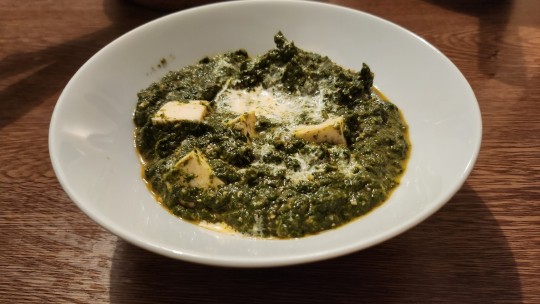
Hackle-lo and Scuttle Curry
One of the Telvanni Peninsula's most famous dishes, this simple, mild curry of hackle-lo and firm scuttle is delightfully rich and flavourful, yet simultaneously mild and balanced. Serve with wickwheat flatbread or steamed saltrice. Suitable for vegetarians! For a vegan version, replace paneer with tofu, and butter with coconut oil.
You will need:
225g paneer, cut into generous cubes (Indian cottage cheese CANNOT be substituted with regular cottage cheese! If you can't find paneer, use tofu or fresh mozzarella)
125g baby spinach
2 onions, finely diced
2 tbsp concentrated tomato purée
3 tbsp unsalted, unroasted cashews
1 tsp ginger paste
5 cloves garlic, minced
2-3 green chilis, sliced (like finger chilis or even fresh jalapeños), optional if you prefer it mild
1/2 tsp garam masala
2 cloves
2 cardamom pods, crushed lightly
1 tsp cumin
1 tbsp cinnamon
2 tbsp sugar
175ml water
2 tbsp butter
Coconut oil or vegetable oil
Salt and pepper, to taste
Cream, to serve (optional)
Method:
Combine the cloves, cardamom, cumin, and cinnamon in a pot, and gently cook on low heat with the butter and 1 tbsp coconut oil to release the aroma.
Toss in half the onions and fry until golden brown. Add the ginger paste and minced garlic, and continue to fry until they release their aroma. Add the tomato purée, salt and pepper, sugar, and garam masala. Continue stirring until well combined, then remove from heat, add the water, and purée until smooth with a blender or immersion blender. Set aside.
In a wok or large pot, fry the rest of the onions and chilis until glossy and aromatic. Add the spinach, and gently stir fry until the spinach has wilted and released most of its water. The spinach should still be green and not overcooked.
Transfer to a blender or use an immersion blender once again. Add the cashews. Purée until smooth and transfer to a bowl.
Put the tomato purée mix back on the heat and bring to a gentle bubble, then immediately remove from the heat and add the spinach purée. Stir until totally incorporated. Throw in your paneer and gently stir until well coated in curry.
Serve hot immediately, with either basmati rice or naan/roti on the side. Drizzle with cream to serve, if desired.
#the elder scrolls#tes#food#cooking#Recipe#Recipes#Indian#Indian food#Palak paneer#Saag paneer#Cheese#vegetarian recipe#vegetarian recipes#vegan cooking#Vegan#Vegan food#Hackle-lo and Scuttle Curry#Curry#World building#worldbuilding
248 notes
·
View notes
Text
Chickpea, Spinach and Potato Curry with Quinoa (Vegan)
This meal is a perfect example of how a delicious and wholesome meal can be budget friendly. It's easy to make and requires only ingredients from any the basic grocery store.
This meal is a perfect example of how a delicious and wholesome meal can be budget friendly. It’s easy to make and requires only ingredients from any the basic grocery store. Eating Healthy On a Budget Today I am starting a series “Eating Healthy On a Budget” sharing meals that you can make with ingredients costing under 2€. This series is especially designed for students and busy people who do…
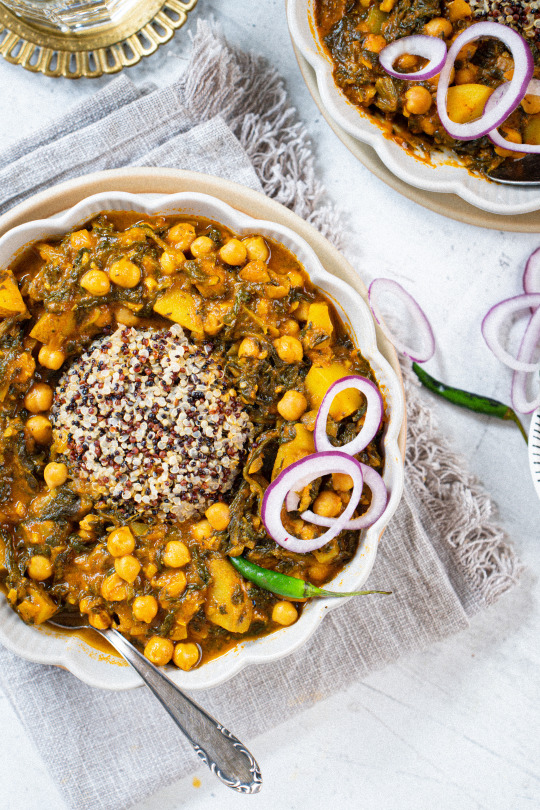
View On WordPress
#Budget eating#budget healthy eating#Budget meals#budget vegan meals#easy vegan recipe#Eating healthy on a budget#Healthy budget meals#Healthy meal ideas#healthy recipe#indian vegan curry#indian vegan recipe#Indische vegane rezepte#quinoa recipe#vegan curry recipe#vegan healthy meals#vegan meal ideas#vegan recipes#vegane rezepte#Veganes essen
4 notes
·
View notes
Text
Ragi (Finger Millet) Dosa
#finger Millet#ragi#ragidosa#finger Millet dosa#veganfood#veganism#vegan#healthy food#tasty#connecttofood#cooking#food#jamshedpur#delicious#healthy recipes#recipes#indian recipes#indian food
17 notes
·
View notes
Photo

Vegan Malai Burfi (Milk Cake)- Indian Fudge Bars
#vegan#malai burfi#milk cake#indian#fudge bars#bars#asian#recipe#pistachio#nuts#cream cheese#almond flour#almond#cardamom#cinnamon#coconut flour#gluten free#tapioca free#egg free#dairy free#soy free#dessert#veganricha
244 notes
·
View notes
Text

Onion Bhaji
#food#recipe#appetizer#bhaji#bajji#fritters#onions#chickpea#turmeric#cumin#cilantro#vegetarian#vegan#gluten free#dairy free#indian
143 notes
·
View notes
Text

Vegan Butter Chicken
#savoury#india#indian#indian food#indian recipes#north indian#dinner#butter chicken#chicken#tempeh#garam masala#food#recipe#recipes#vegan#veganism#plantbased#plant based#dairyfree#dairy free#friends not food#cooking#food porn#foodporn#food photography#curry#curries#foodie#nut free
51 notes
·
View notes
Text
Today we are going to cook masale bhat (मसाले भात) or masala rice. This dish is quick and easy to prepare. All you need is some veggies, rice, some masalas ( red chilli, goda masala), salt and sugar for taste.
Masale bhat recipe
Masal bhat recipe in marathi
Masala bhat recipe
Steps:
1. Wash rice and keep aside for 30 mins
2. Cut all veggies
3. In a cooker, add oil.
4. Add jeera, hing and mustard seeds
5. After sizzle, add veggies and washed rice.
6. Add all masalas, salt and sugar.
7. Fry for a while.
8. Add boiling water ( for 1 cup of rice add 2 cups water and for 2-3 cups of veggies add 0.5 - 1 cup of water.)
9. Close the cooker lid and wait for 2 whistles
10. Garnish with coriander and coconut and serve hot!
Sangita's Corner
Khaat raha Khush raha
#masalebhat #QuickRecipes #IndianFood #IndianCuisine #LunchIdeas #DinnerRecipes #MaharashtrianFood #SpicyRice #EasyLunch #VegetarianRecipes #InstantMeals #HealthyRecipes #OnePotMeals #IndianLunch #IndianDinner #QuickLunchIdeas #IndianVegetarian #MasalaRice #DailyCooking #HomeCookedMeals #TraditionalIndianRecipes #SimpleRecipes #TastyFood #FoodInMinutes #VegetarianDelights #ComfortFood #AuthenticIndianFood #RiceRecipe #QuickIndianRecipes #DesiFood #DeliciousRecipes #IndianCooking #EasyRecipes #FastCooking #TiffinRecipes #LunchBoxIdeas #SpicyFood #QuickDinner #EasyIndianFood #HealthyLunch #QuickFixMeals #Foodie #FoodLovers #TastyMeals #ViralRecipes #FoodTips #MasaledarBhat #MaharashtrianLunch #DailyMealIdeas #QuickDinnerIdeas #EasyIndianCooking #RiceLovers #RecipeInMinutes #QuickMeals #QuickAndTasty #IndianFlavors #InstantLunch #VegetarianMealPrep #LunchSpecial #SimpleIndianFood #HealthyDinner #SpicyRecipes #FoodBloggers #TastyLunch #RiceBowl #TraditionalRecipes #HealthyEating #SimpleLunchRecipes #HomeCooking #FlavorsOfIndia #DesiLunch #HomeMadeFood #VegetarianLunch #YummyRecipes #IndianRiceRecipes #QuickVegetarianRecipes #IndianTiffin #QuickHomeRecipes #RiceLoversUnite #ViralFood #ViralRecipes2024 #ViralFoodIdeas #FoodVlogger #HomeChef #EasyAndFast #LunchTimeFavorites #ComfortRice #SpicyRiceBowl #FlavorsOfMaharashtra #DesiRice #IndianMealPrep #LunchAndDinnerIdeas #HomeStyleCooking #QuickFood #FoodWithFlavors #VegetarianMealIdeas #RiceDish #MasalaMagic #QuickAndEasy #DailyFoodIdeas #IndianHomeCooking
#marathi #masalebhat #masalebhatrecipemarathi #marathirecipe
#masala #masalabhat #masalabhatrecipe
#indian food#indian recipes#youtube#recipes#foodie#food#rice#cooking#home cooking#indian moms#pressure cooker#lunch#lunch recipes#lunchbox#lunchtime#healthy lunch#lunch break#dinner#veggies#vegan#vegetarian
12 notes
·
View notes